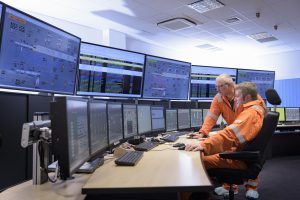As I celebrated the holidays with my family, I am constantly reminded of the similarities between the daily energy management dilemmas facing the world and my children’s new Christmas toys. At first glance, this may seem like an odd comparison but it has more in common than most people realize. It is all based on fundamentals – having power to maintain a mission, whenever or wherever it takes you.
Anyone with children understands that toys without batteries are not much fun. How many times have you had to make an important call from your mobile device only to have it interrupted by a dead battery? As energy demands are growing around the planet, the need for energy conservation and storage has reached a critical mass.
People have been harvesting green energy for years. Hydropower was used to grind grain into flour. It became a staple of the Tennessee Valley Authority(TVA) to produce power in rural areas. Windmills are still used for pumping ground water without electricity. Solar power seems to be the big player in the renewable market today. All of these are great sources of renewable clean energy, but there is one glaring problem with all of them. The energy produced is consumed the very instance it is generated. This is a problem of all grid energy producers. How can I have enough energy when and where I need it? This sets the table for the discussion about all intermittent renewable energies. It costs a lot to install them and they are intermittent. So how can I know if they will be of service when I need it to be?
Harvesting that energy for a later time is now and has been the “missing link” to the renewable energy equation. It has been done for many years in the form of reservoirs of water that were pumped full at night and then released during the peak of usage during the day. It was a practical solution for its time and served a purpose. It also shows that the demands on the grid have been there almost since the beginning of power generation. The problem of harvesting energy for later usage is not a new problem. The need for more production of power is helping fuel the need for renewable energy as much as the need for energy efficiency.
It has been said that necessity is the mother of invention. Energy storage technology has been lagging behind generation technology for many years. It has only seemed to make strides on the small scale like our mobile devices. It is understandable that large scale energy storage is a hot topic. Water reservoirs were a “brute force” method which took energy to pump into a reservoir only to take it out later. Imagine what could be done if solar energy could be stored for demand periods or a later time? If we had the “batteries” to store this, then how could we release it? Would we need to store it mechanically like water in a reservoir so we utilized the same generators? Is that even possible with renewable energies like wind and solar? The need for energy storage system becomes greater every passing day. Many of us think that batteries are the answer to the renewable energy equation. They are certainly an important piece of it, but we may find out that it is just the next step to using it once we store it.
The potential of large scale energy storage will change the way we look at everything from how we view renewable energy sources to how we handle emergency events when the utility is interrupted. Schneider Electric is leading the way with Think Microgrid Special Report, but this road is going to be slow for everyone in this business until this energy storage mountain is conquered.
Someone get my flashlight, the power just went out…..
When was the last time you lost power or when your battery went dead and how would it have helped to have an energy reserve? Let us know in the comments below.
